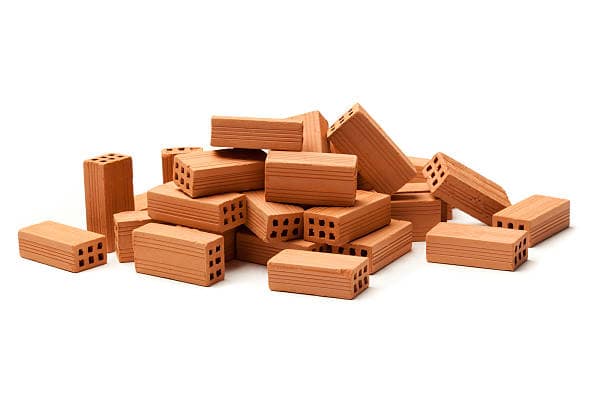Based on the analysis of millions of words in construction publications, these are the TOP 20 most common nouns used in construction.
Which do you know? Which do you need to learn more about?
- wall
- building
- water
- material
- system
- work
- door
- surface
- roof
- metal
- construction
- wood
- air
- concrete
- steel
- floor
- glass
- type
- window
- joint

LANGUAGE DEEP DIVE
Mastering Core Construction Nouns and Their Collocations
These 20 nouns form the foundation of construction vocabulary across architecture, engineering, and building. However, knowing the noun alone is not enough for professional fluency. You must understand which verbs and adjectives naturally combine with each noun, and which nouns commonly appear before or after them. These patterns create the natural phrases that professionals use daily in design, documentation, and construction coordination.
For more on the action verbs that combine with these nouns, see our guide to construction action verbs.
How to Study Noun Collocations:
Professional construction English rarely uses nouns in isolation. Architects don’t just discuss “walls“—they discuss “load-bearing walls,” “partition walls,” or “exterior walls.” They “design walls,” “detail walls,” or “specify wall assemblies.” Engineers don’t just mention “systems“—they analyze “structural systems,” “mechanical systems,” or “building envelope systems.” Learning these multi-word combinations helps you communicate with the precision expected in technical contexts.
Common Collocations with Core Construction Nouns
wall
load-bearing wall, partition wall, exterior wall, curtain wall, shear wall
design the wall, construct the wall, detail the wall assembly
“The structural engineer designed the shear wall to resist lateral loads.”
“Architects detail the exterior wall assembly to prevent moisture infiltration.”
building
building envelope, building code, building systems, commercial building
design the building, construct the building
“The architect designed the building to meet LEED certification requirements.”
“All work must comply with the local building code.”
water
waterproofing, water infiltration, potable water
prevent water infiltration, manage water drainage
“The building envelope must prevent water infiltration at all penetrations.”
material
building materials, finish materials, material specifications
specify materials, select materials, submit materials
“The architect specified materials for all interior finishes in Division 09.”
When describing material composition in specifications, understanding the distinction between “made of” versus “made from” ensures clarity about whether materials remain visible in finished work or undergo manufacturing transformation.
system
structural system, mechanical system, HVAC system, building system
design the system, install the system, coordinate systems
“Engineers designed the structural system using steel moment frames.”
work
construction work, scope of work, defective work
perform work, complete work, inspect work
“All contractors must perform work in accordance with the contract documents.”
For comprehensive understanding of how “work” functions in construction English, see our detailed guides on “work” as a noun (describing deliverables and scope) and “work” as a verb (describing activities and problem-solving).
door
door opening, door frame, fire door, door hardware
install the door, detail the door assembly
“Contractors install fire doors at all rated wall assemblies.”
surface
exterior surface, finished surface, walking surface
prepare the surface, finish the surface
“Painters must properly prepare the surface before applying coatings.”
roof
roof assembly, roof deck, roof membrane
design the roof, install roofing, waterproof the roof
“The architect designed the roof assembly with multiple drainage zones.”
metal
structural metal, sheet metal, metal fabrication
fabricate metal, install metal, weld metal
“Steel fabricators shop fabricate metal components before delivery to site.” For more, read the deep dive on Metal and Steel Collocations.
construction
construction documents, construction phase, construction administration
begin construction, manage construction
“The design team produces construction documents during the final design phase.”
wood
wood framing, wood joists, engineered wood
frame with wood, install wood
“Carpenters frame exterior walls with wood studs and wood sheathing.”
air
air barrier, air infiltration, conditioned air
prevent air leakage, supply air
“The building envelope design must prevent air infiltration at the wall assembly.”
concrete
reinforced concrete, cast-in-place concrete, concrete slab
place concrete, finish concrete, cure concrete
“Workers place concrete in continuous pours to avoid cold joints.”
steel
structural steel, steel framing, steel reinforcement
fabricate steel, erect steel, weld steel
“Ironworkers erect structural steel according to the erection drawings.” For more, read the deep dive on Metal and Steel Collocations.
floor
floor slab, floor system, floor plan
design the floor, install flooring
“The structural engineer designed the floor system using composite metal deck.”
glass
glass curtain wall, tempered glass, insulated glass
install glass, glaze the opening
“Glaziers install insulated glass units in the aluminum curtain wall frames.”
type
construction type, building type, material type
classify the type, specify the type
“Building codes classify construction type based on fire resistance ratings.”
window
window opening, window frame, window assembly
install windows, detail the window
“Contractors install windows according to manufacturer installation instructions.”
joint
control joint, expansion joint, construction joint
detail the joint, seal the joint
“The architect detailed control joints in the concrete masonry wall.”
Understanding Noun Relationships in Technical Communication
Professional construction communication frequently combines multiple nouns to create specific technical terms. Construction English creates precise terminology by combining nouns: “curtain wall system,” “roof membrane assembly,” “floor slab construction,” “steel beam connection.” The first noun often acts like an adjective, modifying the second noun. A “concrete slab” is a slab made of concrete. A “steel column” is a column made of steel.
Certain adjectives appear repeatedly with specific nouns in construction contexts. “Load-bearing wall,” “exterior surface,” “structural system,” “finished floor”—these combinations signal specific technical meanings. A “load-bearing wall” is fundamentally different from a “partition wall,” even though both are walls. Understanding these distinctions is critical for professional communication across architecture, engineering, and construction.
Professional Communication Across Disciplines
The same core nouns appear in architecture, engineering, and construction, but professionals in each discipline use them with slightly different emphasis. Architects focus on spatial relationships, building performance, and material selection: “building envelopes,” “wall assemblies,” “finish materials.” Engineers focus on structural capacity and technical analysis: “structural systems,” “load-bearing walls,” “steel connections.” Contractors focus on installation methods and construction sequencing: “construction methods,” “work sequences,” “quality control.”
Further Study and Learning Tips
These 20 nouns represent the essential building blocks of construction vocabulary. They appear in every project phase, every discipline, and every type of construction document. However, knowing the nouns alone provides only basic comprehension. Professional fluency requires understanding the collocations—which words naturally combine with these nouns in technical contexts.
To build this fluency, actively study how professionals use these nouns in context. When you read specifications, notice which adjectives appear before “wall” or “system.” Create your own collocation lists organized by noun, showing common verbs, adjectives, and related nouns.
Practice producing these collocations in your own professional writing. Instead of “put in the concrete,” write “place concrete.” Instead of “make the building,” write “construct the building” or “design the building,” depending on your role.
Notice how the same noun takes different meanings in different collocations. A “curtain wall” is a specific type of exterior wall system. A “shear wall” is a structural element that resists lateral loads. Understanding these technical distinctions—not just the vocabulary—marks you as fluent in English for Specific Purposes for construction.
This vocabulary forms the foundation of technical communication for architects, engineers, and construction professionals worldwide. Mastering these core nouns and their collocations is essential for effective participation in design meetings, construction coordination, project documentation, and all other forms of workplace communication in the building industry.




